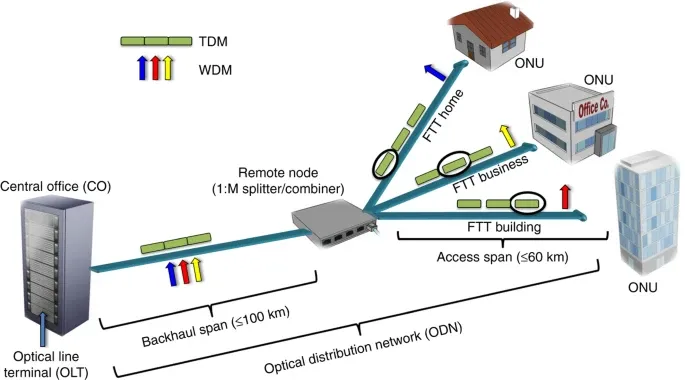Investing in a Fiber Optic Security System: How It’s the Future of Secure Systems
Secure Your Residential Or Commercial Property With Trustworthy Fiber Optic Safety Solutions
In a period where safety threats are progressively innovative, the need for efficient protection options is paramount. Fiber optic safety systems stand out by supplying phenomenal integrity and performance, leveraging sophisticated light transmission modern technology to boost monitoring capabilities. security fibers. Comprehending the ins and outs of fiber optic protection can illuminate the path to safeguarding your building more efficiently.
Benefits of Fiber Optic Safety
Fiber optic safety and security remedies offer a series of advantages that make them increasingly crucial in today's digital landscape. One of the most considerable benefits is their premium data transfer ability, which permits the transmission of huge amounts of data over lengthy distances without significant signal degradation. This ability is specifically useful for protection systems that count on high-definition video clip security and real-time tracking.
Additionally, fiber optic wires are naturally a lot more protected than standard copper circuitry. They are unsusceptible to electro-magnetic interference, making them much less at risk to hacking or eavesdropping. This boosted protection is critical for shielding delicate information and preserving the integrity of security systems.
Moreover, fiber optics are a lot more resilient and immune to environmental factors, such as moisture and temperature variations, guaranteeing long-term integrity and decreased maintenance costs. The light-weight nature of fiber optic cable televisions additionally simplifies installation processes, enabling for greater versatility in system design.
Just How Fiber Optic Equipment Work
In modern-day safety and security applications, the procedure of fiber optic systems counts on the principles of light transmission through flexible glass or plastic fibers. These fibers are developed to carry light signals over cross countries with marginal loss, making them ideal for transmitting data connected to protection surveillance. The core of the fiber, bordered by a cladding product, makes certain that light signals remain consisted of within the core with a sensation called overall interior reflection.
When incorporated right into safety systems, fiber optic cords can transfer information from various sensing units, such as electronic cameras, activity detectors, and alarm systems, to a central surveillance station. The high bandwidth capacity of optical fiber permits the transmission of large amounts of information simultaneously, making it possible for real-time security and punctual response to possible dangers.

Types of Fiber Optic Security Solutions
Numerous kinds of fiber optic safety options have emerged to boost monitoring and protection across various environments. One noticeable service is fiber optic border intrusion discovery systems (PIDS), developed to check and protect home borders through the discovery of vibrations and disruptions along fiber optic cables. These systems supply real-time alerts, allowing prompt responses to unauthorized gain access to efforts.
Another efficient service is fiber optic video security. This modern web link technology leverages high-definition cameras attached through fiber optic cords to send video clip information over fars away without considerable loss of top quality. This arrangement is particularly advantageous in extensive areas, such as flight terminals and industrial sites, where standard copper cords may fail.
In addition, fiber optic sensing units are significantly used for ecological surveillance, finding adjustments in temperature level, stress, or acoustic signals that can show protection breaches or dangerous conditions. These sensors offer high sensitivity and accuracy, making them excellent for essential framework defense.

Installment and Upkeep Tips
Reliable installation and maintenance of fiber optic protection solutions are essential for guaranteeing their optimum performance and durability. Fiber optic wires should be routed securely, avoiding sharp bends or twists that can compromise their integrity.
Throughout installment, it is suggested to conduct extensive screening of the system to validate that all components are working correctly. Regular maintenance checks must be set up to evaluate the fiber optic cable televisions for any indications of wear or damage, in addition to to make sure that links continue to be safe. Cleaning the ports periodically is additionally vital to avoid signal loss as a result of dirt or particles.
In addition, maintaining an upgraded inventory of set up elements and their specs can assist in easier troubleshooting and upgrades. By adhering to these installment and upkeep ideas, residential or commercial property owners can make best use of the performance of their fiber optic security solutions, ensuring a dependable protection versus prospective risks.
Comparing Costs and Performance
When reviewing fiber optic protection options, understanding the balance between prices and efficiency ends up being paramount (security fibers). Organizations has to take into consideration the upfront financial investment, ongoing maintenance costs, and the long-term worth these systems offer. While fiber optic systems might call for a higher initial installation expense compared to traditional copper circuitry, their resilience and lowered vulnerability find more to electromagnetic interference often equate to lower upkeep prices in time
Performance is another essential element; fiber optic protection systems provide improved information transmission rates and improved integrity. They can cover bigger distances without signal degradation, making them ideal for extensive residential properties or remote areas. Additionally, the high data transfer ability supports advanced safety applications, such as high-def video clip surveillance and real-time monitoring, which are necessary for extensive security administration.
Inevitably, the option between expense and efficiency ought to be assisted by certain protection needs and run the risk of evaluations. Organizations should evaluate their distinct requirements, considering variables like building dimension, safety dangers, and technical developments. By conducting a comprehensive cost-benefit evaluation, stakeholders can make educated decisions that align with their protection purposes while making sure a sound financial investment in fiber optic innovation.
Conclusion
Finally, fiber optic protection options provide substantial advantages in terms of efficiency, dependability, and resistance to environmental interferences. These systems improve security capacities and boundary security, making them a reliable choice for thorough security. Although first installment costs might be higher, the lasting benefits, consisting of reduced upkeep and remarkable functionality, validate the investment. Ultimately, the fostering of fiber optic modern technology represents a forward-thinking technique to safeguarding homes versus developing protection risks.